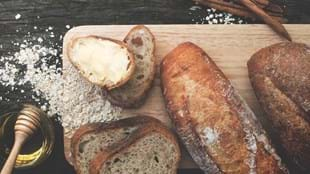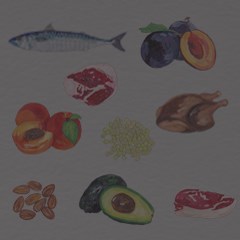With around 700 million tonnes produced each year, wheat is the world’s third largest crop, after rice and maize. So people are eating bread, lots of it. Once mainly a Western staple, bread is slowly but surely conquering the entire world, including Asia, where noodles and rice were once unrivalled.
Yet bread’s global spread is accompanied by a gathering backlash. Is white bread bad for health? Will the wrong sort of bread lead to weight gain, dental caries and dementia? Is organic, wood-fired, ancient grain sourdough really the healthy antidote? Just exactly what to believe?
Here’s our ten-step guide to making better – informed – bread choices.
- Check the marketing spin
Bread packaging is full of spin. Whether it’s promoting home-style goodness, hi-fiber or multi-grain, the actual impact on the level of dietary fiber, nutrition and salt levels is often minimal. “Multi-grain” is a particularly tricky term, meaning vastly different things to manufacturers and consumers. In fact, whole-grain or multi-grain breads are frequently no healthier, in terms of fiber and salt, than standard sliced white bread. Read the label!
- It contains ancient grains so it must be good, right?
Ancient varieties of wheat – including einkorn, emmer, spelt and Khorasan wheats – can now be found in many health food outlets. But the difference in nutritional content of the milled flour from these ancient varieties is virtually indistinguishable from standard commercial varieties grown around the world. Seeds and other forms of grains – including chia, flax, hemp and rye – do add nutritional value, but this can come at a cost. The more of these grains, nuts and seeds, the denser (stiffer) and less palatable the bread can become. It’s a trade-off few consumers are prepared to make, hence the higher price.
- “Freshly store baked” isn’t always what it says
Many of the breads sold as “freshly baked in store” are made elsewhere and baked to about 80-90 percent completion. Once snap frozen, the bread is transported to the store for the last bit of baking time. Simple products, such as bread rolls, may be made in store, but only from a pre-prepared mix. Store-baked bread may also contain more salt than equivalent breads, so it’s worth checking the labels.
- Is sourdough bread healthier?
Sourdough bread is made from a starter culture populated with a mixture of yeast occurring naturally in the air, making it a product of wild and differing yeast types. The complex nature of sourdough fermentation gives rise to a wide range of different tasting by-products, but most sourdough is made from exactly the same ingredients as normal bread. So, the nutritional benefits are largely indistinguishable. However, there are zealous commercial and home bakers who use sourdough starter cultures as a way of adding taste to whole grain (and low salt) breads. These are healthier, courtesy of the whole grain, high fiber, lower salt and absence of preservatives.
- Wraps and flatbreads are different, right?
Not so much. Wraps are really bread without the leavening actions of yeasts. Too often, fats and oils are added to flatbreads to give the pliability needed to wrap around fillings. So no, flatbreads are not healthier. Remember, bread is nearly all starch anyway. Starch, a simple carbohydrate, is digested into glucose (or sugar). In wholegrain breads, some of the bran (or husk) of the wheat is present (or added), supplying most of the dietary fiber. Added to this is protein (mainly from the gluten), some vitamins (often added) and minerals (again, often added). Like most food groups, bread needs to be enjoyed in moderation.
- What about genetic modification?
The varieties of wheat used in modern bread bear little resemblance to the stunted grasses of ancient times. Modern wheat is disease resistant, heat tolerant, and higher yielding. This has been achieved over generations of selective breeding, with farmers and horticultural scientists selecting on the best for the next season of farming. Because of this, so far there is no genetically modified (GM) wheat currently released for human consumption.
- What else is added in the bread-making process?
Modern wheat grain is milled to nano-particle precision in flour mills. The resulting fine powder is mixed with a blend of ascorbic acid (Vitamin C), yeast, emulsifiers, rising agents (often enzymes), vitamins, minerals, fat, preservatives and salt – lots of salt. It is this cocktail of chemicals and additives that has become the subject of intense scrutiny and concern.
- Are preservatives a problem?
To keep bread looking fresh, mould retardants such as calcium propionate and sulphites can be added. Both compounds are linked to rare adverse reactions, mainly in young children. Even in the face of consumer alarm, however, additives will continue to be used to meet the exacting standards of the modern manufacturing processes – and, paradoxically, the consumer. People love bread to be cheap, remain fresh for days, and, importantly, to be mould-free at purchase. So the preservatives will remain.
- How much salt is there in commercially made bread?
The salt content of bread is unacceptably high. Around 20 percent of the average intake of salt comes from bread alone. At least 25 percent of the bread on supermarket shelves has as much salt per slice as a packet of potato crisps! It’s worth examining the label of your favorite loaf and making comparisons. A simple switch could dramatically cut your daily salt intake.
- How much should I worry about gluten?
Wheat flour contains a protein that, when mixed with a little water and kneaded, adds much of the texture to bread – gluten. Gluten is the key allergen in celiac disease, a devastating auto-immune condition of the large intestine. Some of the symptoms of celiac disease are shared by the less well understood irritable bowel syndrome (IBS). Diagnosis of IBS is complicated, and some people with bowel disturbances (bloating, irritability, constipation, diarrhoea) have improvements in symptoms when switching to a gluten-free diet. The extent to which gluten is a culprit in IBS is hotly debated, but there are definitely some people who benefit from cutting gluten out of their diet. But don’t be duped by hyped anti-gluten marketing. Remember, gluten-free foods are not always healthier, and certainly cost a whole lot more.
A quick guide to healthy bread choices
- Always read the label – identify breads lower in salt, with little or no added sugar, have high fiber, and preferably whole-grains.
- Use healthy spreads including avocados, low fat mayonnaise and tahini.
- Remember that peanut ‘butter’ is already buttery enough.
- Fill your sandwich or roll with a marvellous creation of colorful salads, including plenty of your favorite greens.
- Most dietary guidelines suggest adults should aim for at least six servings of carbohydrate–rich foods each day. A standard bread roll or a slice of bread is a single serve. Bread should contribute to this target, but not be the only source of carbohydrates – rice, pasta, legumes and beans are also important.

Professor David Cameron-Smith is a regular Fit Planet contributor. A transplanted Australian living in New Zealand, he obtained a PhD in nutritional biochemistry from Deakin University, and undertook postdoctoral training at the Royal Prince Alfred Hospital, Sydney. His research interests include the importance of nutrition in the maintenance of optimal health in an ageing population, and the impact of nutrition in regulating the function of muscles.








